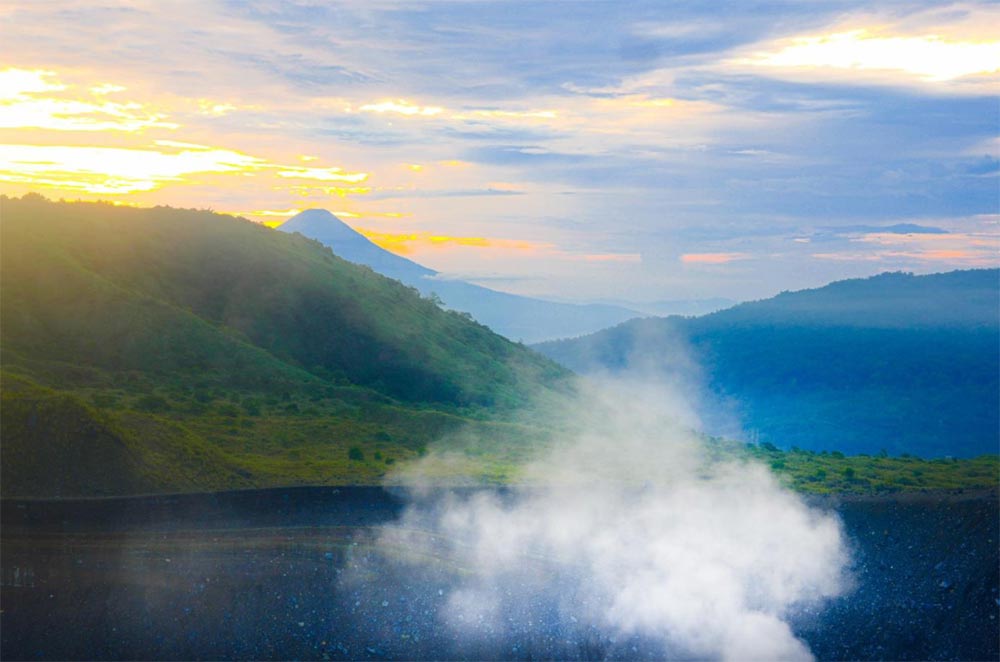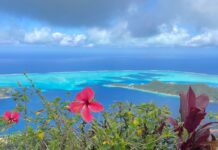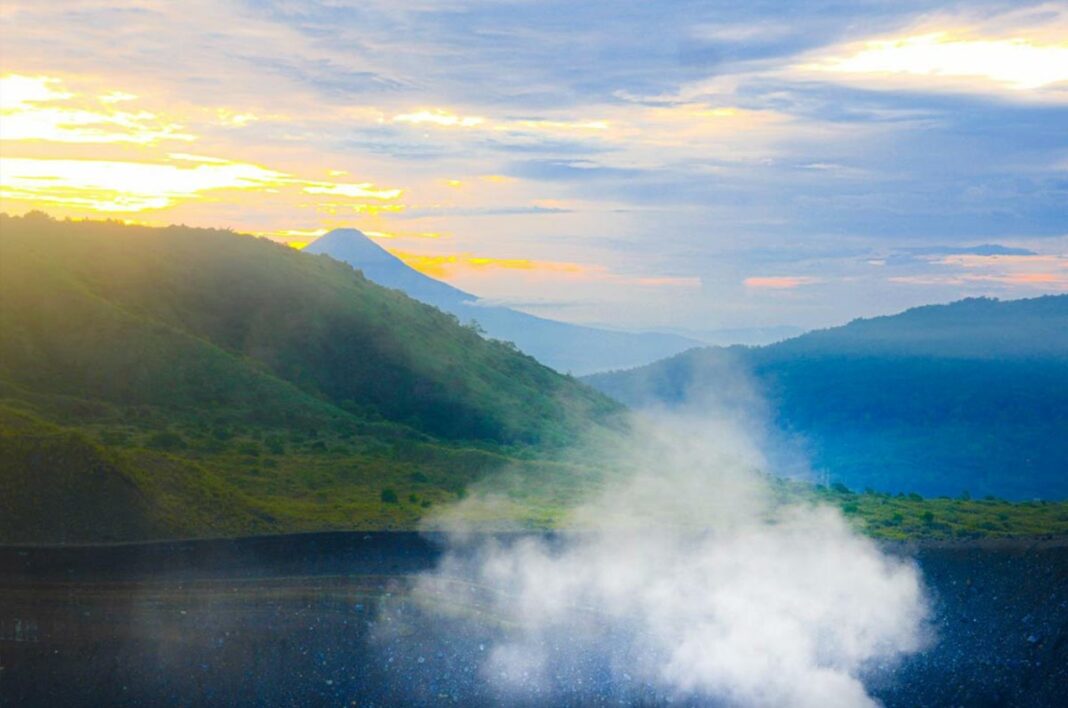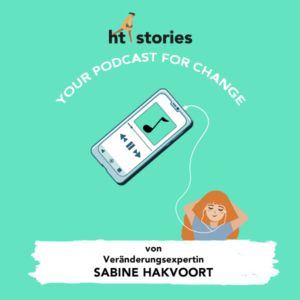The north of Sulawesi is better developed for tourism than Papua. Or so you might think at first glance, as there are diving resorts, the famous Lembeh Strait and the Bunaken Marine Park. There is a Sheraton among other international hotels in the provincial capital of Manado. We take a break from our boat trip and plan to explore the tourist highlights of the region and five days. Visually, the hotels are not different from those of the same name in other regions of the world. At second glance, however, the world looks different. If it weren’t for the incredibly friendly Indonesians, who take great care of our well-being and make our stay a special experience. The breakfast buffet at our hotel seems to enjoy a particularly good reputation in the city, because in the morning, whole armies of uniformed employees, security staff or government employees populate the huge room. The atmosphere is cheerful.
Monkey tourism
One of the highlights of the region is Tangkoko National Park. Wild crested macaque monkey families live here, which do not hide and can be photographed without shyness. An absolute specialty, however, are the tarsier macaques, miniature monkeys whose huge eyes will melt your heart. They hide in the so-called, wildly branching „sleeping trees“. These acrobatic animals, weighing 80 grams and about 8 cm tall, jump from tree to tree at night to hunt. It is difficult to catch a photo of the shy animals. But some visitors simply shine their mobile phone light into a hole in a branch and bang, they have a great photo of a monkey with its eyes wide open. There is a fine line between interest, respect and voyeurism.
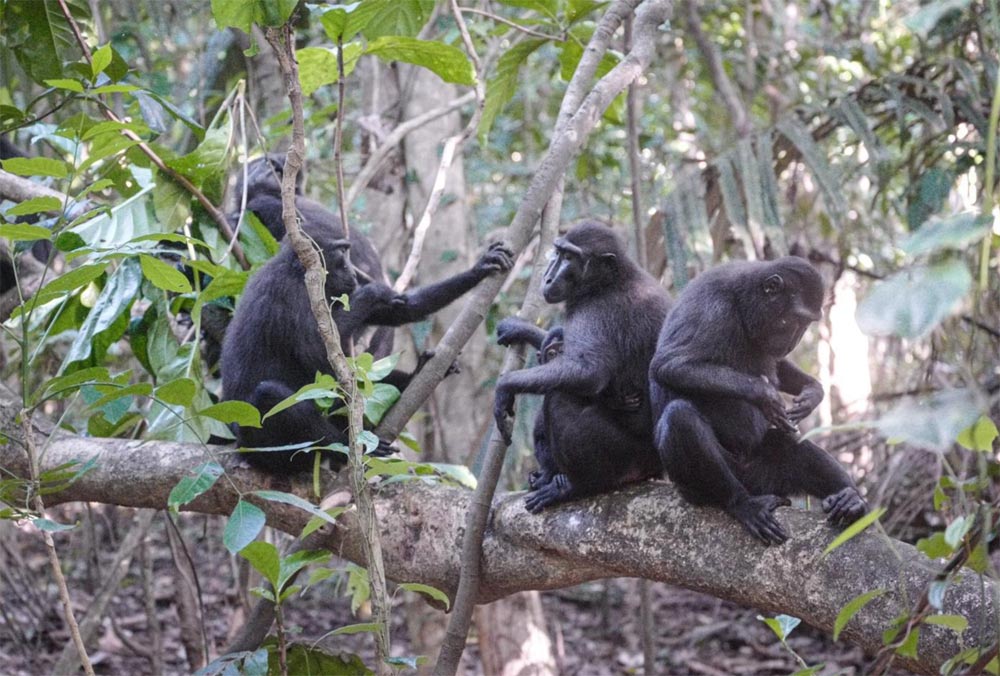
In search of culturally interesting places, we set off from Manado with our lovely driver, who speaks a little English. It is surprising how little English is spoken in this region. But we manage and drive with him through the provincial capital of North Sulawesi. There is an old, rather run-down part of the city that is vaguely reminiscent of the region’s Dutch heritage. This includes the municipal museum, which certainly has few visitors as it is in dire need of renovation, dirty and dark. But the staff are all the more endeavoured and friendly.
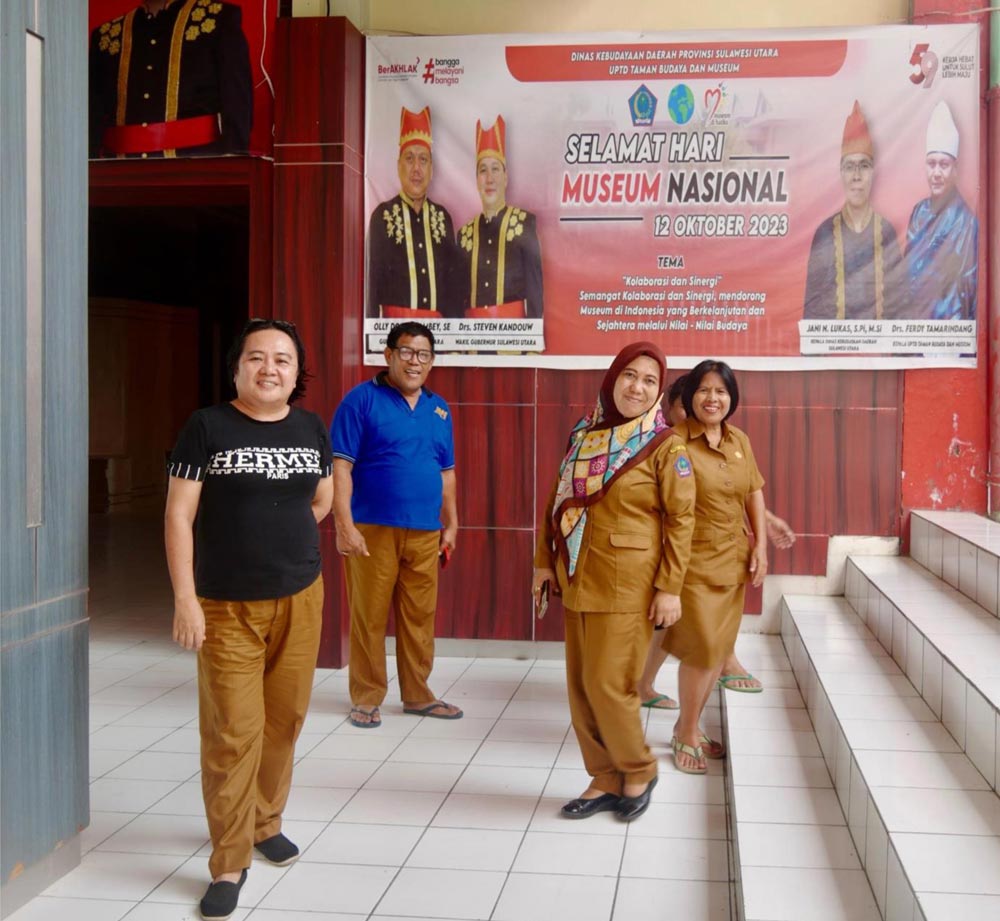
How do you deal with the past?
Manado’s past is characterized by two ethnic groups, the fishermen and the farmers. In the 16th century, the Portuguese made the ruling Sultan of Ternate their vassal and established themselves in this region. Then came the Spanish, who had already settled in the Philippines and traded coffee with Chinese businessmen. They bought the hinterland from the Portuguese and conquered the fort of Manado. Ultimately, however, it was the Dutch who colonized and shaped the region, as evidenced by the numerous Christian churches and one or two consumer brands, such as the “Holland Bakery”. Things became warlike in the 20th century when the Japanese invaded the city during the Second World War. What was initially perceived as a liberating blow against the unpopular colonists quickly developed into a horror that only ended with the Japanese surrender in 1945. (https://de.wikipedia.org/wiki/Japanische_Kriegsverbrecher_des_Zweiten_Weltkriegs)
Full independence from the Dutch was only granted to the Indonesians in 1949 with the Treaty of Amsterdam. The road to independence was long and difficult, as the Dutch initially pushed through a union of Indonesian states and Holland as the form of government. The Indonesian nation state was finally proclaimed in 1950. And how did the people of Manado fare during this time? They have another story of their own, that of the rebels who wanted to declare Sulawesi an independent state, which was thwarted in 1958 when Manado was conquered by the central government.

One of the region’s main attractions are the islands of Bunaken and Silaken in the Marine National Park. The area is particularly popular with divers, who use heavy photographic equipment to „hunt“ for pygmy seahorses or bright yellow orangutan crabs. In January, we travelled to the boat show in Düsseldorf in search of information about Indonesia’s diving areas and met Barney Seier, who gave us new insights thanks to his self-published book „Coral Triangle“, which has become a kind of house bible on board. From him we not only learn something about how the beautiful anemones abuse their guests, the anemone fish known as Nemo, for their reproduction, but also how stony corals photosynthesize and why they are so important for reef formation.
We have already had unforgettable diving experiences in Raja Ampat, but here too we are enchanted by the variety of corals and the biodiversity.
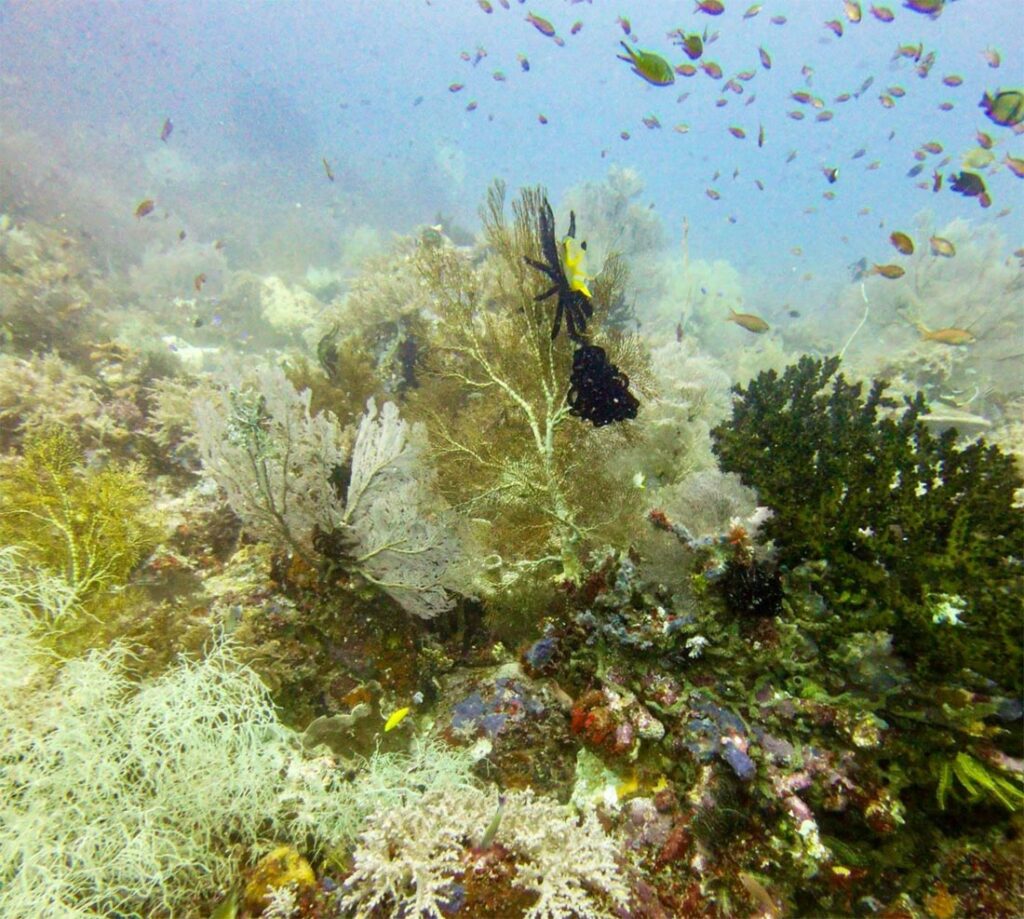
Recently, a volcano erupted not far from Manado, on an island off the coast. The airport was closed for a longer time. Volcanic activity is a special feature of this region. It is restless in this part of the world and there is also a lot of rumbling underwater. (https://web.volcanodiscovery.com/de/erdbeben/indonesien.html)
But that doesn’t stop us from climbing up a volcano before sunrise in the neighboring city of Tomohon, located at over 1000 meters and renowned for its flower production in this tropical region. It smolders but is said to be harmless. We hope so and enjoy a wonderful Pentecost Sunday morning accompanied by the sound of a Christian hymn rising up from the valley that I recognize. The Dutch missionaries are ever present.
